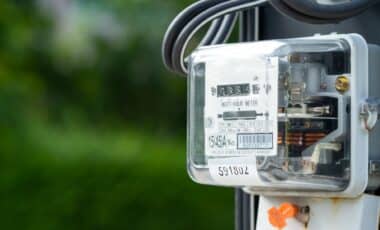Millions of households across the UK are facing rising energy bills from January 1, 2025, but there is still time to make significant savings. With the average household bill set to increase by £21 per year, switching to a fixed tariff could save customers up to £158 annually.
Fixed-Rate Tariffs Offer Relief as Energy Costs Climb
The upcoming Energy Price Cap, set at £1,738 per year, will affect millions of customers relying on variable tariffs. This represents a substantial challenge for many households already grappling with high energy costs. According to industry experts, the rise is not a one-time occurrence—high prices are expected to persist throughout 2025.
In a bid to mitigate these increases, energy companies such as Eon, British Gas, and So Energy are offering fixed-rate tariffs below the price cap. For instance, Eon’s 12-month fixed tariff is approximately 9% cheaper, translating into savings of around £158 annually compared to the capped rate.
Factors to Evaluate Before Locking in a Fixed Tariff
Switching to a fixed tariff offers price certainty, a critical factor for households managing tight budgets. Martin Lewis, founder of Money Saving Expert (MSE), emphasises that locking in a fixed tariff under the price cap can result in savings if energy rates remain elevated. “If you find a fix for less than the price cap from January 1 (or even 1% more than the current Oct-Dec cap), you’ll likely save over the year,” Lewis advises.
However, decisions about fixing rates must be approached carefully. Here are key considerations:
- Duration of Fix: Short-term fixes (12 months) provide greater flexibility if rates drop later. Longer-term fixes require predicting future price trends, which can be challenging.
- Comparison to Price Cap: Any fixed tariff below or slightly above the price cap offers a hedge against potential further increases.
- Supplier Terms: Review exit fees and other terms before committing to a fixed rate.
Options for Fixed Tariffs
Several major suppliers are offering competitive fixed-rate energy bill tariffs. Highlights include:
- Eon: A 12-month fixed tariff at 9% below the January cap.
- British Gas: Attractive fixed deals tailored to household consumption.
- Outfox the Market and So Energy: Additional providers offering sub-cap energy bill tariffs.
While these options are appealing, customers must act swiftly, as the January 1 deadline leaves limited time for evaluating and switching plans.s the January 1 deadline leaves limited time for evaluating and switching plans.
Understanding the Impact of the Price Cap
The Energy Price Cap is a government mechanism that limits the maximum rate suppliers can charge per unit of energy. From January, the cap is set at £1,738 per year for a typical household. This figure accounts for combined gas and electricity usage and varies depending on actual consumption.
For customers on standard variable tariffs, the cap dictates pricing. However, with rates projected to remain high, fixed tariffs provide an opportunity to secure more predictable expenses. Martin Lewis cautions that while the cap ensures a maximum limit, it does not guarantee low rates. “Bear in mind this only really applies to one-year fixes – it’s a much harder decision if you want to fix for longer,” he notes.
Last Chance to Lock In Energy Bill Savings Before Prices Rise
With just days remaining before the January price hike, energy customers have a unique opportunity to avoid higher bills. By switching to fixed tariffs, households can achieve significant savings and avoid the volatility of variable rates. Experts predict that energy costs will remain elevated well into 2025, making fixed tariffs a practical option for financial stability.
For those still considering their options, the advice is clear: compare available fixed-rate plans to your current costs, understand the terms, and switch before the new rates take effect.









